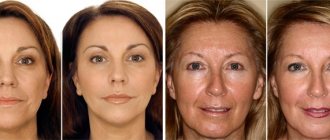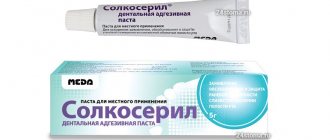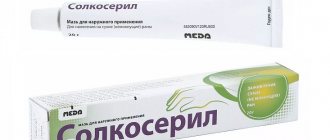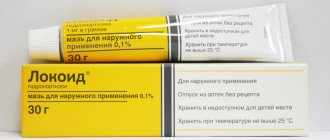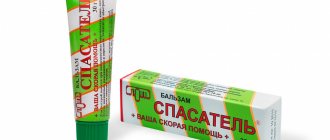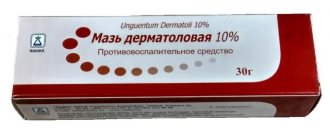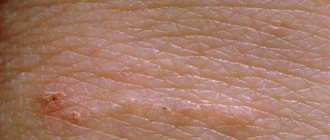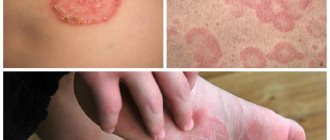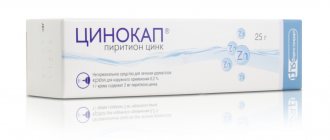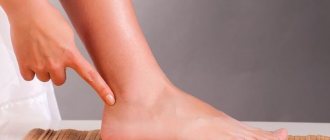Composition and release form
| Injection | 1 ml |
| deproteinized dialysate from the blood of healthy dairy calves, standardized chemically and biologically (in terms of dry matter) | 42.5 mg |
| excipients: water for injection - up to 1 ml |
in ampoules of 2 ml; there are 25 ampoules in a box; or in ampoules of 5 and 10 ml; There are 5 ampoules in a box.
| Gel | 1 g |
| deproteinized dialysate from the blood of healthy dairy calves, standardized chemically and biologically (in terms of dry matter) | 4.15 mg |
| preservatives: methyl parahydroxybenzoate (E218) and propyl parahydroxybenzoate (E216) | |
| excipients: calcium lactate; sodium carboxymethylcellulose; propylene glycol; water for injections |
in tubes of 20 g; 1 tube in a box.
| Ointment | 1 g |
| deproteinized dialysate from the blood of healthy dairy calves, standardized chemically and biologically (in terms of dry matter) | 2.07 mg |
| preservatives: methyl parahydroxybenzoate (E218) and propyl parahydroxybenzoate (E216) | |
| excipients: cetyl alcohol; cholesterol; white Vaseline; water for injections |
in tubes of 20 g; 1 tube in a box.
Solcoseryl ointment – price in the pharmacy, composition analysis
You will not like the cost of this drug. If 1-2 years ago it could be bought for 500-700 rubles, now the price for Solcoseryl ointment in a pharmacy will be from 2600 to 3000 rubles. This cost is indicated for January 2022 (and the drug is not available in many pharmacies), but below we will also talk about cheaper indirect analogues of this drug. Solcoseryl in the form of an ointment is available in aluminum tubes of 20 g and is sold in pharmacies without a prescription.
Solcoseryl ointment: composition
| Active substances (in 1 g of ointment) – → deproteinized dialysate from the blood of healthy dairy calves (in terms of dry matter). | 2.07 mg |
| Excipients - cholesterol, cetyl alcohol, white petrolatum, distilled water, as well as preservatives - methyl parahydroxybenzoate (E 218) and propyl parahydroxybenzoate (E 216). |
Composition analysis - the main and only active component of this drug is a deproteinized dialysate from the blood of dairy calves. This substance is very rich in low molecular weight organic compounds - amino acids, glycolipids, as well as oligopeptides and nucleosides. All these components, acting on damaged tissues, accelerate the healing processes in them. Studies have shown that the rate of regeneration when using this drug increases by approximately 30%.
Due to the large amount of organic components in the composition, the use of preservatives is also required. These are E 218 and E 216 (methyl parahydroxybenzoate and propyl parahydroxybenzoate), which can be classified as parabens. You need to pay attention to this point if you have allergic reactions to cosmetics or oral hygiene products, or if you have increased allergies in general.
Solcoseryl: analogues
It is impossible to find analogues for Solcoseryl ointment in Russian pharmacies, because the only drug with a similar composition, Actovegin ointment, is no longer imported into Russia. But there are several drugs with a completely different composition that can also speed up the healing of skin damage. We are talking about scratches, abrasions, cracks, cuts, wounds, minor burns, bedsores, etc. If there are wounds, a doctor should prescribe such drugs (after examining the wound and determining the risk of infection).
Among drugs for external use that accelerate wound healing (drugs from the “regeneration stimulants” group), we can recommend the following drugs:
- OLAZOL – the drug is made on the basis of chloramphenicol, sea buckthorn oil and benzocaine (anesthetic), and it is produced in a convenient aerosol form. It not only accelerates wound healing, but also has an antimicrobial and analgesic effect (hence Olazol is also suitable for wet, infected wounds). In turn, Solcoseryl ointment does not have an antimicrobial effect, and therefore it can only be applied to clean, dry wounds. The cost of the drug is only about 220 rubles.
- BEPANTEN –This line of drugs contains 5% dexpanthenol - a precursor of vitamin B5, which stimulates skin regeneration. If you have an uninfected dry wound under a crust (without a wet discharge), then any of the following forms of the drug will suit you - Bepanten cream or Bepanten plus cream. These drugs are usually applied 2 times a day - rub in with gentle massaging movements.
But if we are talking about wet wounds, which always have a risk of infection, only Bepanten Plus cream is suitable for you (the same version of the drug is preferable for cuts, scratches and abrasions). The cream contains dexpanthenol + antiseptic chlorhexidine 0.5%, which provides a pronounced antimicrobial effect. On wet wounds, the drug is applied on turundas under a bandage - 2 or more times a day, but shallow cuts and scratches can be treated openly. The cost of the Bepanten line of drugs ranges from 400 to 470 rubles per 30 g tube (there are also tubes of 50 and 100 g).
- METHYLURACIL ointment - this drug is also capable of slightly accelerating the regeneration processes of wounds on the skin, but much weaker in comparison with Solcoseryl ointment.
The only advantage of the drug is its very low price (a 25 g tube costs only 50 to 100 rubles). For dry, uninfected wounds, apply and rub in the product using gentle movements. If we are talking about moist, uninfected wounds, then the drug is applied on the wounds under a bandage. The frequency of changing dressings will depend on the depth/area of the wound surface, the amount of wet discharge from the wound, etc. Methyluracil ointment does not have an antiseptic effect and therefore there is a risk of suppuration of wet wounds when using it (to reduce the risk of suppuration, it is necessary to pre-treat the wound with antiseptics).
pharmachologic effect
Pharmacological action - wound healing, angioprotective, membrane stabilizing, regenerating, cytoprotective, antihypoxic.
The drug Solcoseryl is a deproteinized hemodialysate containing a wide range of low-molecular components of cell mass and blood serum of dairy calves with a molecular weight of 5000 D, the properties of which are currently only partially studied by chemical and pharmacological methods.
In in vitro tests, as well as during preclinical and clinical studies, it was found that Solcoseryl:
— increases reparative and regenerative processes;
— promotes activation of aerobic metabolic processes and oxidative phosphorylation;
— increases oxygen consumption in vitro and stimulates glucose transport into cells under hypoxic conditions and into metabolically depleted cells;
— increases collagen synthesis (in vitro);
— stimulates cell proliferation and migration (in vitro).
Solcoseryl gel does not contain fats as auxiliary components, making it easy to wash off. Promotes the formation of granulation tissue and the elimination of exudate.
From the moment fresh granulations appear and the wound dries, it is recommended to use Solcoseryl ointment, which contains fats as auxiliary components and forms a protective film on the wound surface.
Indications for the drug Solcoseryl
Solcoseryl solution for injection.
Occlusive diseases of peripheral arteries in stages III–IV according to Fontaine in patients with contraindications/intolerance to other medications;
chronic venous insufficiency, accompanied by trophic disorders (Ulcera cruris), in cases of their persistent course;
disorders of cerebral metabolism and blood circulation (ischemic and hemorrhagic stroke, traumatic brain injury).
Solcoseryl gel, ointment.
Minor damage (abrasions, scratches, cuts).
1st and 2nd degree burns (sunburn, thermal burns).
Frostbite.
Difficult-to-heal wounds (including trophic ulcers and bedsores).
Contraindications
Solcoseryl solution for injection.
Established hypersensitivity to calf blood dialysates;
since Solcoseryl injection contains derivatives of parahydroxybenzoic acid (E216 and E218), used as preservatives, as well as trace amounts of free benzoic acid (E210), the drug should not be used if there is an allergic reaction to the listed components;
There are no data on the safety of Solcoseryl injection in children, so the drug should not be prescribed to children under 18 years of age;
Solcoseryl injections should not be mixed when administered with other drugs, with the exception of isotonic sodium chloride solution and 5% glucose solution.
Solcoseryl gel, ointment.
Hypersensitivity to one of the components of the drug.
Use with caution if you are predisposed to allergic reactions.
Which is cheaper: Actovegin or Solcoseryl
Actovegin is a complete analogue of Solcoseryl. Its active ingredient is deproteinized calf blood dialysate. The release forms of Actovegin do not differ from those in which Solcoseryl can be found. Tablets and ampoules for intravenous administration are prescribed for the same indications. Actovegin is a prescription drug, like Solcoseryl. Therefore, they can be considered as the same substance, sold under different names. This means that when one of them is not available in the pharmacy, the pharmacist has every right to offer an analogue as a replacement. However, when comparing price categories, Solcoseryl should be given preference, because its cost is lower than Actovegina.
Side effects
Solcoseryl solution for injection.
In rare cases, allergic reactions may develop (urticaria, hyperemia and swelling at the injection site, increased body temperature). In this case, it is necessary to stop using the drug and prescribe symptomatic treatment.
Solcoseryl gel, ointment.
In rare cases, allergic reactions in the form of urticaria and marginal dermatitis may develop at the site of application of Solcoseryl. In this case, you must stop using the drug and consult a doctor.
A short-term burning sensation may be observed at the site of application of Solcoseryl gel. If the burning sensation does not go away for a long time, the use of Solcoseryl gel should be abandoned.
Interaction
Solcoseryl injections should not be mixed when administered with other medications, especially with phytoextracts.
The pharmaceutical incompatibility of Solcoseryl in the form of an injection solution with parenteral forms has been established:
Ginkgo biloba extract,
naftidrofuryl,
bencyclane fumarate.
As solutions for diluting Solcoseryl injection, only isotonic sodium chloride solution and 5% glucose solution should be used.
The interaction of Solcoseryl with other topical medications has not been established.
Which is better: Metrogyl Denta or Solcoseryl
Both drugs can be used in the treatment of stomatitis. However, it is better to consider them not as drugs of choice, but from the point of view of a combination of two types of gels. The thing is that stomatitis is most often caused by bacterial infection of the tissues of the oral cavity, which causes the appearance of wounds and ulcers. Metrogyl Denta is an antimicrobial drug with a pronounced antibacterial effect. At the same time, everyone who has encountered stomatitis at least once knows how much one wants to speed up the healing process of ulcers that cause severe pain, especially when eating food. Solcoseryl can force tissue to regenerate as quickly as possible, which ensures prompt healing of wounds.
Directions for use and doses
Solcoseryl injection solution: intravenous or intramuscular.
In the treatment of occlusive diseases of peripheral arteries in stages III–IV according to Fontaine - 20 ml intravenously daily. Intravenous drip administration in isotonic sodium chloride solution or 5% glucose solution is possible. The duration of therapy is up to 4 weeks and is determined by the clinical picture of the disease.
In the treatment of chronic venous insufficiency accompanied by trophic disorders (Ulcera cruris) - 10 ml intravenously 3 times a week. The duration of therapy is no more than 4 weeks and is determined by the clinical picture of the disease. An important additional measure aimed at preventing peripheral “venous” edema is the application of a pressure bandage using an elastic bandage.
In the presence of local trophic tissue disorders, simultaneous therapy with Solcoseryl jelly and then Solcoseryl ointment is recommended.
In the treatment of ischemic and hemorrhagic strokes in severe and extremely severe forms, the main course is 10 or 20 ml intravenously, respectively, daily for 10 days. Upon completion of the main course - 2 ml intramuscularly or intravenously for 30 days.
Traumatic brain injury (severe brain contusion) - 1000 mg intravenously, daily for 5 days.
If intravenous administration of the drug is not possible, the drug can be administered intramuscularly, usually 2 ml per day undiluted.
When using the undiluted drug intravenously, it must be administered slowly, since it is a hypertonic solution.
Solcoseryl gel, ointment: topically.
Apply directly to the wound surface after preliminary cleansing of the wound using a disinfectant solution.
Before starting treatment of trophic ulcers, as well as in cases of purulent infection of the wound, preliminary surgical treatment is necessary.
Solcoseryl gel is applied to fresh wounds, wounds with wet discharge, and to ulcers with signs of weeping - a thin layer on a cleaned wound 2-3 times a day. It is recommended to lubricate areas where epithelization has begun with Solcoseryl ointment. The use of Solcoseryl gel continues until pronounced granulation tissue forms on the damaged skin surface and the wound dries out.
Solcoseryl ointment is used primarily for the treatment of dry (non-wetting) wounds.
Solcoseryl ointment is applied in a thin layer to a cleaned wound 1-2 times a day; it can be used under bandages. The course of treatment with Solcoseryl ointment continues until the wound is completely healed, its epithelization and the formation of elastic scar tissue.
For the treatment of severe trophic damage to the skin and soft tissues, the simultaneous use of parenteral forms of Solcoseryl is recommended.
Solcoseryl injections: what for
Any surgical intervention is accompanied by a violation of the integrity of the skin and tissues. If the operation involves the removal of some fragment of an internal organ, the body will require a long rehabilitation period, during which the body will be fully or partially restored. Solcoseryl in ampoules can be instantly delivered to tissues, shortening the recovery period. Injections allow you to mobilize all the internal forces of the body to heal wounds, cuts and sutures not only on the outside, but on the internal organs that remain after operations.
Special cases include the prescription of intravenous or intramuscular administration to patients after ophthalmological operations. Solcoseryl ensures active blood circulation, which accelerates the process of adaptation of the organ of vision in the postoperative period, and also reduces the risk of complications.
special instructions
Solcoseryl (gel, ointment) should not be applied to a contaminated wound, since it does not contain antimicrobial components.
The use of Solcoseryl, like all other medications, is undesirable during pregnancy and breastfeeding and is possible only when absolutely necessary and under the supervision of a doctor.
If you experience pain, redness of the skin near the site where Solcoseryl was applied, secretion from the wound, or increased body temperature, you should immediately consult a doctor.
If, when using Solcoseryl, healing of the affected area is not observed within 2-3 weeks, you should consult a doctor.
Solcoseryl ointment as a face mask
Cosmetologists claim that the use of Solcoseryl in the early stages of age-related changes allows you to maintain youthful skin. Timely start of use can replace expensive laser rejuvenation in the salon. First of all, Solcoseryl allows you to get rid of wrinkles and prevent their earlier appearance. The ointment is capable of:
- provide adequate nutrition to the facial skin;
- get rid of acne;
- relieve inflammation;
- improve complexion;
- tighten the oval;
- get rid of wrinkles.
The expected effects are possible due to the fact that using a mask allows you to saturate tissues and cells with oxygen and accelerate regeneration. Thanks to the application of the cream, collagen, which is responsible for skin elasticity, begins to be actively produced. The more collagen produced, the fewer wrinkles your skin will have. It is like a support for a heavy skin sheet, preventing its individual areas from falling through, preventing the formation of wrinkles.
